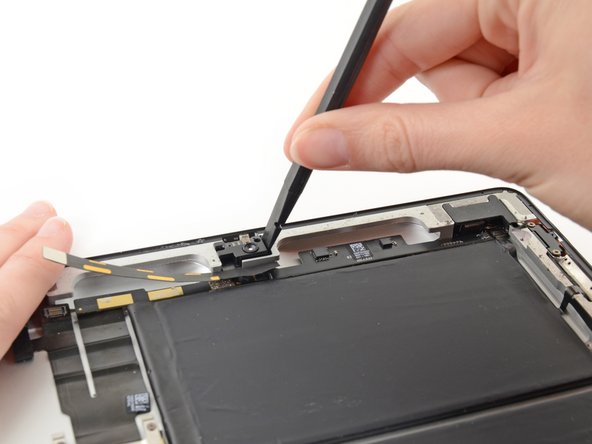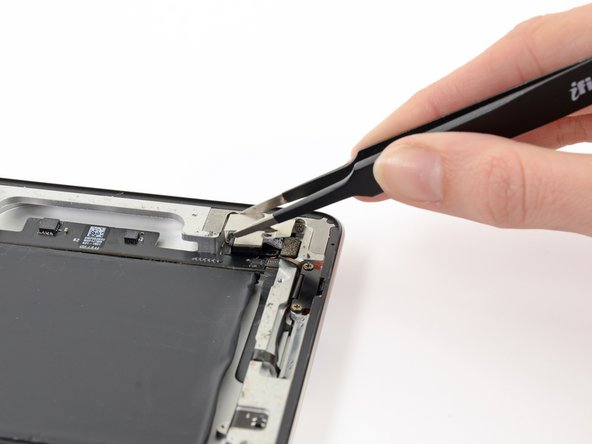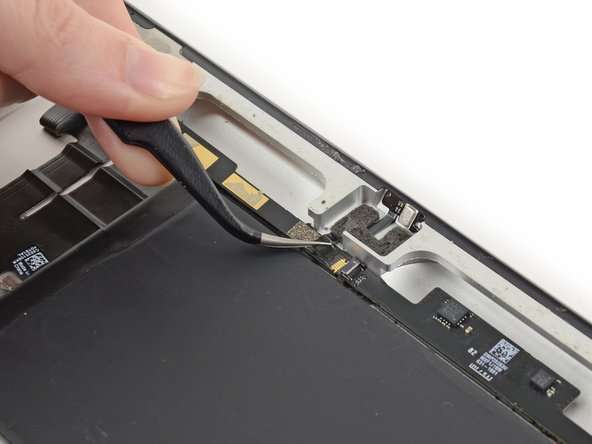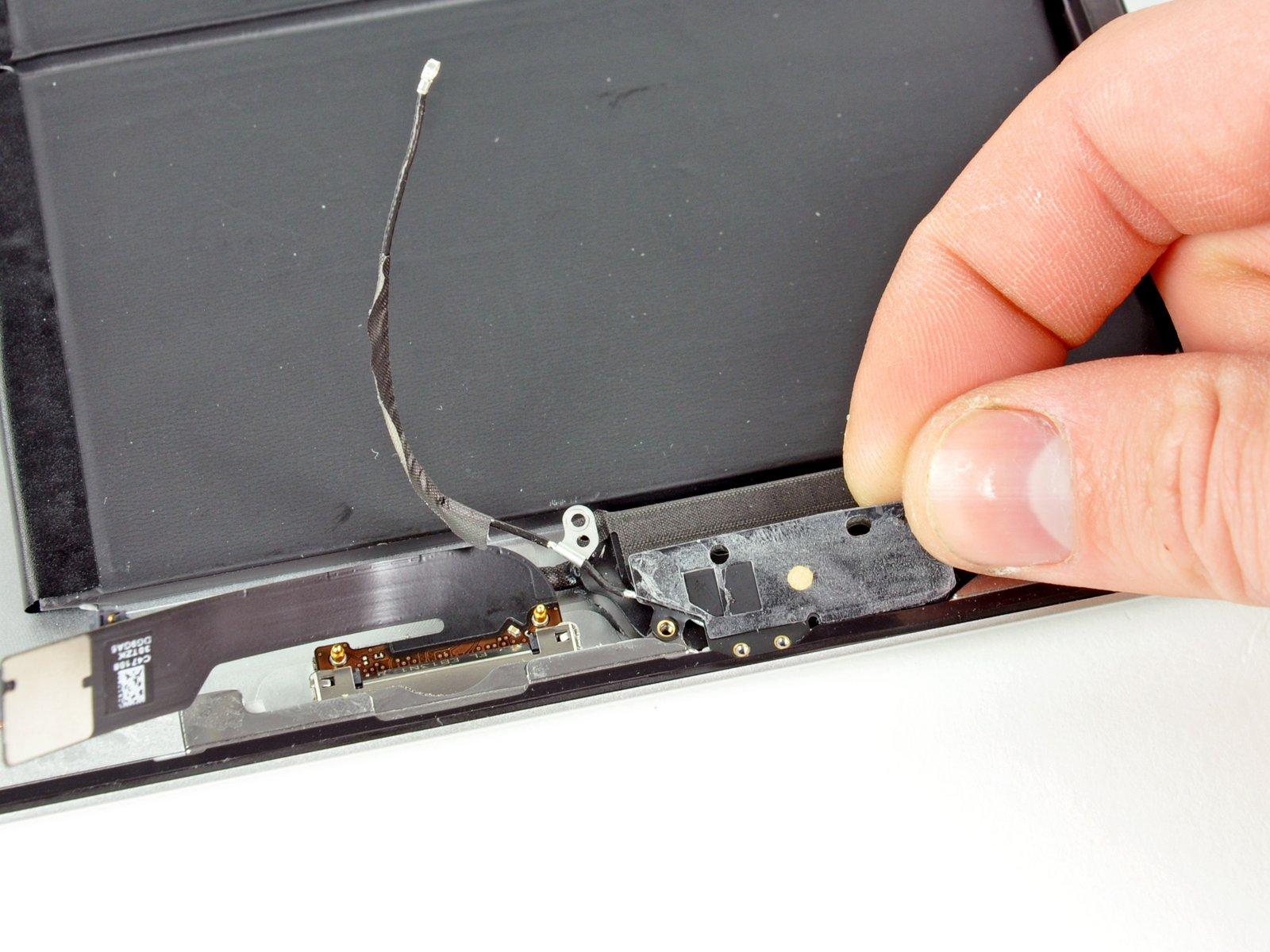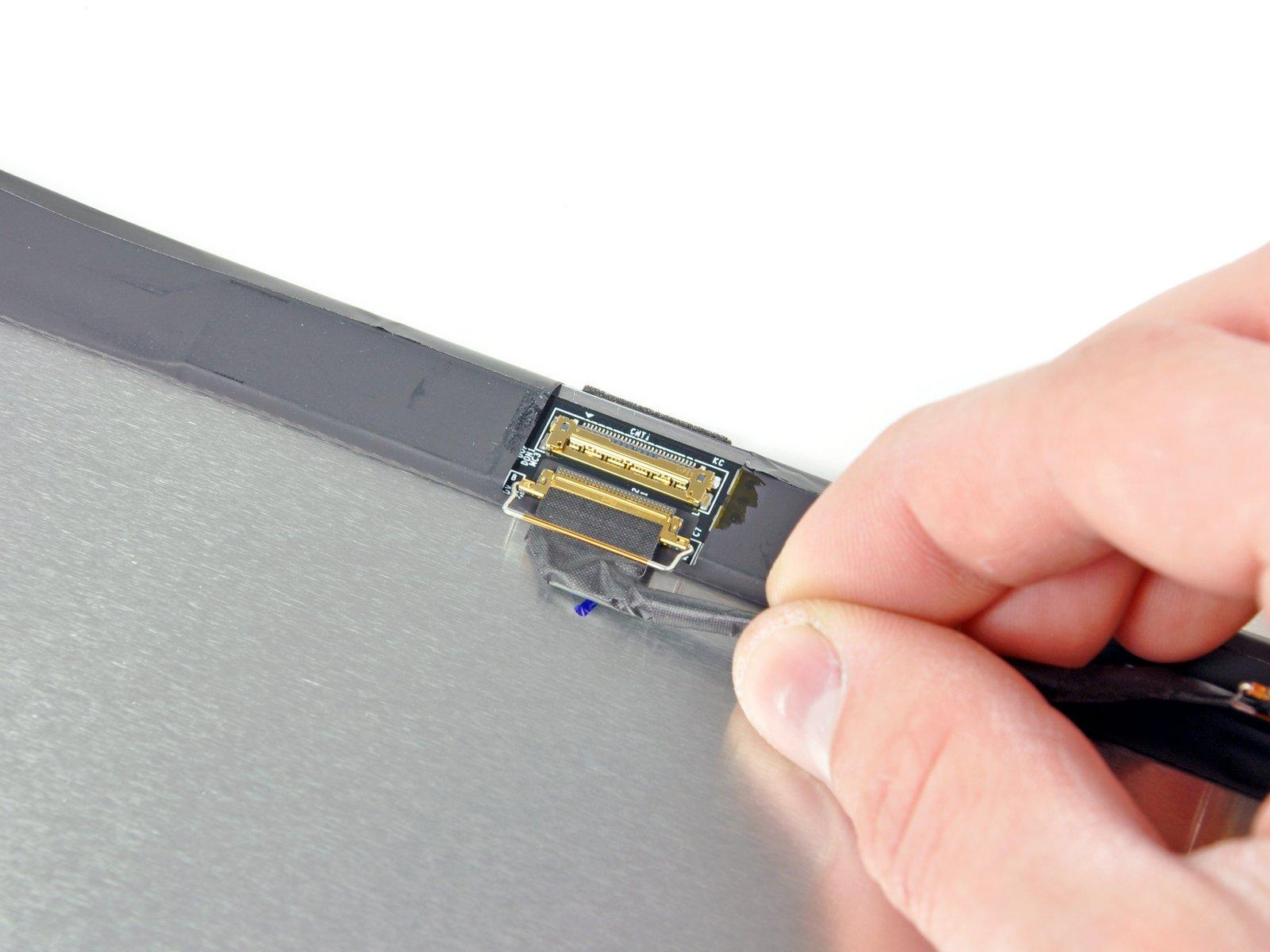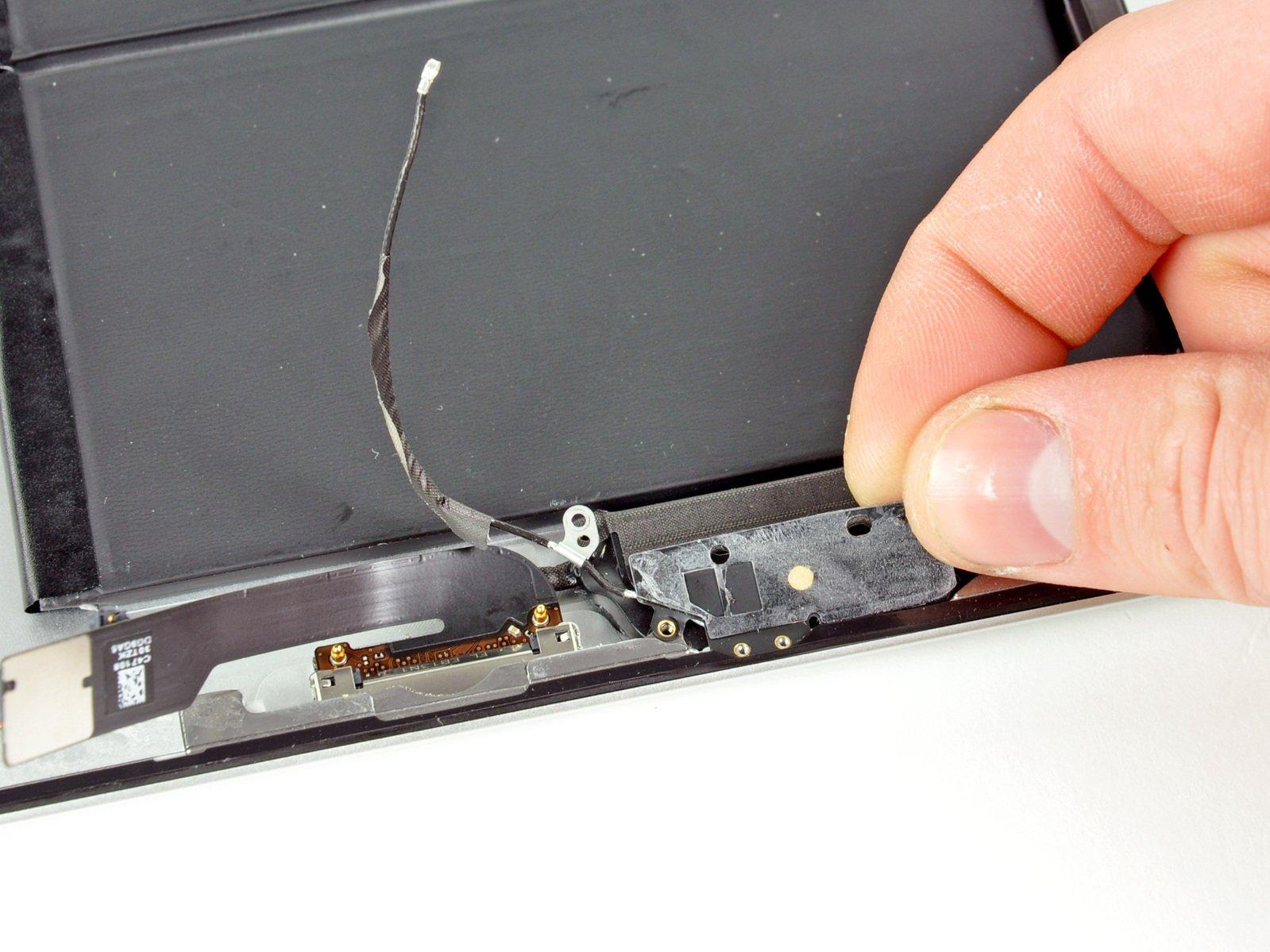DIY iPad 2 Wi-Fi EMC 2560 Headphone Jack Replacement Guide
Duration: 45 minutes
Steps: 54 Steps
Hey there, savvy fixer! Just a friendly heads-up: make sure to handle those delicate components with care. If you find yourself in a pickle or need a helping hand, don’t hesitate to schedule a repair. You’ve got this!
Follow this guide to swap out that pesky, non-working headphone jack. Your roommates will definitely appreciate it!
Step 1
It’s a great idea to give your microwave a little TLC before you dive in! Cleaning out any sticky residue on the bottom will help keep the iOpener nice and clean too.
– Pop the iOpener right in the middle of the microwave and let it warm up for a bit!
Tools Used
Step 2
Keep an eye on the iOpener, folks! We don’t want it getting too toasty—overheating can lead to a bit of a boom! Let’s keep it under 100˚C (212˚F), shall we?
If the iOpener looks like it’s been hitting the gym and is a little puffy, steer clear of it!
If the middle of the iOpener is still feeling like a hot potato, just hang tight and let it chill for a bit before giving it another warm-up. A well-heated iOpener should stay cozy for about 10 minutes.
– Give that iOpener a warm-up in the microwave for thirty seconds.
– As you work through the repair, keep an eye on your iOpener. When it starts to cool down, pop it back in the microwave for another thirty seconds. You’re doing great!
Tools Used
Step 3
Careful with that iOpener! It’s going to be super toasty, so handle it with care. An oven mitt might just be your best buddy here!
– Carefully take the iOpener out of the microwave, gripping it by one of the flat ends to steer clear of the sizzling hot center. Keep it cool and safe!
Tools Used
Step 4
No microwave? No problem! Just pop your iOpener into some boiling water and let it soak up the warmth.
– Grab a pot or pan and fill it with enough water to give your iOpener a nice, warm bath.
– Bring that water to a boil, then turn off the heat – we’re not trying to cook anything here!
– Gently place your iOpener into the hot water and let it soak for 2-3 minutes. Make sure it’s taking a nice dip and is fully submerged.
– Using some tongs, carefully lift the heated iOpener out of the water – it’s going to be a bit toasty!
– Give the iOpener a good drying off with a towel. We want it ready for action!
– And voila! Your iOpener is all set for use! If it needs a little more warmth, just repeat the process: heat the water to a boil, turn off the heat, and let the iOpener soak for another 2-3 minutes.
Tools Used
Step 5
Put on those snazzy safety glasses to keep your peepers protected, and watch out for that LCD screen—it’s more delicate than it looks!
– If your display glass has decided to take a little tumble, let’s keep the situation under control and protect yourself while you work by taping it up. Safety first, right?
– Grab some clear packing tape and lay overlapping strips over your iPad’s display until it’s completely covered. Think of it as giving your device a cozy little blanket!
– Now, just follow the rest of the guide as best as you can. Remember, once that glass gets a crack, it might want to spread its wings a bit. You might need to use a metal prying tool to gently scoop out the glass as you go along. Stay cool and keep at it!
Step 6
Hey there! While you’re diving into this repair, remember that broken glass can be a bit sharp, so it’s a smart move to rock some safety glasses to keep those pesky shards at bay.
– Place the iOpener flat along the right edge of your iPad, making sure it’s nice and snug against the surface for a solid connection.
– Give the bag a cozy 90 seconds to warm things up before you dive into opening the front panel.
Tools Used
Step 7
Getting that wedged tip of your opening tool in between the glass and plastic might take a bit of elbow grease. Just take your time and be gentle—wiggle that plastic tool back and forth as needed, and you’ll get there in no time!
– Spotting a little gap in the adhesive ring at the upper right corner of your iPad? It’s about 2.0 inches (~5 cm) from the top. Time to take advantage of this tiny flaw!
– Get your tool ready and align it with the mute button. Gently slide the tip of a plastic opening tool into that gap between the front glass and the plastic bezel. Just insert the very tip, enough to give that crack a little nudge.
Step 9
– With the plastic opening tool snugly positioned between the front glass and the plastic bezel, gently slide a plastic opening pick into that little gap right alongside your trusty tool. Keep it smooth and steady!
Step 10
– Gently take out the plastic opening tool from the iPad, and slide the opening pick further under the front glass until it’s about 0.5 inches deep. You’ve got this!
Step 12
The adhesive is super strong, so you might need to put in some muscle. Just take your time and be careful!
If the tip of your trusty opening pick is peeking out from under the front glass, just give it a gentle tug to pull it out a bit. While it’s perfectly fine to use the pick this deep, it might leave some adhesive residue on the LCD. No biggie, just keep that in mind as you go!
– As the iOpener warms up the bottom edge, let’s start peeling off that sticky adhesive from the right edge of your iPad.
– Gently slide the opening pick down along the edge of the iPad, making sure to release that adhesive as you go. You’re doing great!
Tools Used
Step 13
As you peel away the adhesive, you might want to slide the heated iOpener back over to the right edge of the iPad. Just keep in mind that this might depend on how long the iPad has been chilling while you’ve been busy working on it.
– If your trusty opening pick is feeling a bit sticky in the adhesive, just give it a gentle ‘roll’ along the side of your iPad. Keep it moving to help free up that adhesive like a pro!
Tools Used
Step 14
– Before you pop that first opening pick from the bottom corner of your iPad, slide a second pick under the right edge of the front glass. This little buddy will keep the adhesive from sticking back together. Teamwork makes the dream work!
– Give your iOpener a little reheat love, then place it on the top edge of the iPad. Let’s get that adhesive nice and cozy!
Tools Used
Step 15
Hey there! Just a heads up, the Wi-Fi antenna is snugly secured to the bottom right edge of the rear case of your iPad with screws and a cable. Given the antenna’s position, it’s super important to tread lightly during this process—otherwise, you could accidentally cause some irreversible damage to it. So, let’s keep it cool and take our time!
– Alright, folks, it’s time to proceed with caution! We’re getting into some delicate territory here.
– Gently release the adhesive that’s holding the antenna to the front panel, but be super careful not to mess up the fragile bits connecting the antenna to the bottom of the iPad. Take your time and follow these steps closely!
Step 16
Hey there! Just a friendly reminder: avoid sliding the pick beyond the bottom right corner. Doing so could put a damper on your Wi-Fi antenna. Keep it safe and sound!
– Gently glide the opening pick around the bottom right corner of the iPad to free up that pesky adhesive.
Step 17
As you glide the opening pick along the bottom right edge of the front panel, be extra careful! The Wi-Fi antenna is just around the corner and can easily get cut if the adhesive gives way the wrong way. Keep your eyes peeled and take it slow!
Just give that pick a gentle tug—don’t pull it all the way out from under the front glass! Aim to keep about 1/8″ (3 mm) of the tip snugly tucked away under there.
– Gently glide the edge of the opening pick along the bottom side of the iPad to free the adhesive around the Wi-Fi antenna. You’ve got this!
Step 18
– After you’ve navigated past the Wi-Fi antenna—about 3 inches (75 mm) from the right edge, right near the home button—go ahead and reinsert the opening pick all the way in. You’re doing great!
– Now, gently slide that pick to the right to free up the adhesive holding the Wi-Fi antenna to the front glass. Keep up the awesome work!
Step 19
Keep the iOpener cozy, but not too hot! Heat it for a minute max, and give it a breather for at least two minutes before warming it up again. You’re doing great!
If the adhesive has gotten a bit too chill along the bottom edge, give that iOpener a quick reheat to warm things up where you’re working. You’ve got this!
– Keep peeling away the adhesive along the bottom of the iPad, giving that opening pick a little tug to work its way around the home button. Once it’s past the button, slide it back in to a depth of about 1/2 inch (10 mm) and keep up the great work!
Tools Used
Step 20
– Keep peeling that adhesive along the bottom edge of your iPad like a champ!
– Once you’re in, leave the opening pick snugly under the front glass near the home button—it’s a great spot to keep it cozy.
Step 22
If your adhesive has gotten a bit too cool, just pop the iOpener back along the top edge and keep on trucking! If the iOpener feels chilly, give it a little reheat to get back in the game.
– Gently slide the opening pick along the top edge of your iPad, giving it a little tug to navigate around the front-facing camera bracket.
– The adhesive here is pretty tough, so you might need to apply a bit of muscle. Just take your time and be careful—no one wants to accidentally hurt themselves or their iPad!
– If your pick feels like it’s glued in place, try rolling it as shown in step 9. You’ve got this!
Tools Used
Step 23
If your adhesive is feeling warm and cozy, go ahead and take the iOpener off the iPad for a bit of ease. But if it’s still clinging on tight, no worries! Just re-heat that iOpener and place it on the left edge while you get to work.
– Keep peeling away the adhesive at the top edge of the iPad, and gently maneuver the opening pick around the top left corner like a pro.
Tools Used
Step 24
The digitizer cable is nestled about 2″ (50 mm) from the bottom of the iPad. When you’re sliding that pick, make sure to stop when you reach about 2.25″ (60 mm) from the bottom. Keep it steady and you’ll be golden!
– Gently glide the opening pick along the left side of the iPad, letting the adhesive release as you move. This area has a thinner adhesive due to the digitizer running along the entire left edge. Just a friendly tip: keep the pick no deeper than 1/2 inch (10 mm) to avoid any accidental damage to that digitizer. You got this!
Step 25
Be super careful! The bottom of the digitizer cable is just about 1″ (25 mm) from the bottom of the iPad. Take your time and make sure to avoid cutting this cable.
– With your trusty opening pick still nestled under the bottom edge of your iPad, gently free the adhesive from the bottom left corner. You’ve got this!
Step 26
– With one of those nifty opening picks in hand, gently lift up the bottom right corner of the iPad and give it a little tug with your fingers. You’ve got this!
Step 27
Watch out for any sneaky adhesive still hanging around! Grab an opening pick and gently slice through any sticky bits that might be keeping the front panel in place.
– Grab your iPad by the top and bottom right corners, and gently twist the front glass away from the device—like you’re opening a book, but much cooler!
– As you put everything back together, take a moment to pamper that LCD. Use a microfiber cloth and a little blast of compressed air to whisk away any dust bunnies or fingerprints before sealing it up with the glass.
Step 28
– Unscrew those four 2.0 mm Phillips screws that are keeping the LCD snug in the rear case. You’ve got this!
Step 29
To get to those front panel ribbon cables hiding under the LCD, just give the LCD a little flip and set it aside for a moment. You’ve got this!
– Gently lift the LCD from the edge nearest to the volume buttons and flip it out of the rear case—just like you’re turning the pages of your favorite book.
– Carefully place the LCD face down on the front panel.
Step 33
– Gently lift the front-facing camera away from the foam adhesive that’s holding it snugly to the rear case.
– Carefully take out the front-facing camera.
Step 35
– Unscrew the lone 3.3 mm Phillips screw holding down the metal retainer clip for the rear-facing camera. You’re almost there!
Step 36
Make sure that the small thermal pad is snugly in place on the metal retaining clip, just like in the third picture, when you’re swapping out the rear-facing camera. You’ve got this!
– Gently pop the rear-facing camera metal retainer clip straight up from its cozy spot in the rear case.
Step 37
– Grab a trusty plastic opening tool and gently nudge the rear-facing camera connector upwards from its cozy spot on the control board.
– Now, go ahead and detach the rear-facing camera. You’re doing great!
Step 38
– First things first, let’s get that pesky 2.1 mm Phillips screw out of the rear-facing camera housing. Grab your screwdriver and give it a twist!
– Now that the screw is gone, gently lift the camera housing away from the rear case. Easy peasy!
Step 39
Just a friendly reminder: make sure you’re gently lifting the hinged retaining flap and not the socket itself. You’ve got this!
– Grab that trusty spudger and gently lift the retaining flap on the ZIF socket of the button assembly ribbon cable. You’re doing great!
Tools Used
Step 41
Just a friendly reminder: make sure you’re lifting up on the hinged retaining flap, not the socket itself. You’ve got this!
– Grab your trusty spudger and gently flip up the retaining flap on that microphone ribbon cable ZIF socket. You’ve got this!
Tools Used
Step 42
– Carefully grab the microphone ribbon cable with your tweezers and pull it straight out. You’ve got this!
– Gently bend the cable to the side to keep it out of your way. Just a little twist, and you’re on your way!
Tools Used
Step 43
– First up, grab your trusty screwdriver and take out those two 2.9 mm Phillips screws holding the headphone jack in place on the rear case. Easy peasy!
– Next, gently pull the headphone jack out from its cozy home in the rear case and give it a little fold to the side. You’re doing great!
Step 44
– Time to tackle those pesky screws! Grab your trusty Phillips screwdriver and carefully take out the two 2.1 mm screws that are holding the metal bracket snug against the rear case.
– Once those screws are out, gently lift the metal bracket away from the rear case. You’ve got this!
Step 45
– If you see it, grab those tweezers and gently peel away the tape that’s covering the end of the headphone jack/control board cable. You’ve got this!
Tools Used
Step 46
Just a friendly reminder: when you’re prying, make sure to lift up on the hinged retaining flap and not the socket itself. You’ve got this!
– Grab your trusty spudger and gently lift the retaining flap on the headphone jack/control board cable ZIF socket. You’ve got this!
Tools Used
Step 47
– Gently slide the spudger’s tip under the ribbon cable to give it a little nudge and disconnect it.
Tools Used
Step 48
– Carefully lift the headphone jack/control board ribbon cable away from the rear case, releasing it from the sticky adhesive.
Step 49
– Gently slide the flat end of your spudger under the adhesive at the narrower section of the ribbon cable, just beside the headphone jack, and give it a little nudge to loosen things up.
Tools Used
Step 50
– Gently slide the flat end of a spudger beneath the center of the ribbon cable to carefully break the adhesive that’s keeping it stuck to the rear case. You’re doing great!
Tools Used
Step 52
– To kick things off and start loosening that adhesive, gently pry under the control board near the front-facing camera socket. You’ve got this!
Step 53
– Gently slide your prying tool beneath the control board, just next to the rear-facing camera. Take your time, we don’t want any mishaps!
– Now, with a little finesse, pry under the widest section of the board to loosen it from the last bits of adhesive. You’re doing great!
Step 54
– Gently detach the headphone jack assembly from the case and set it aside like a pro.



































































